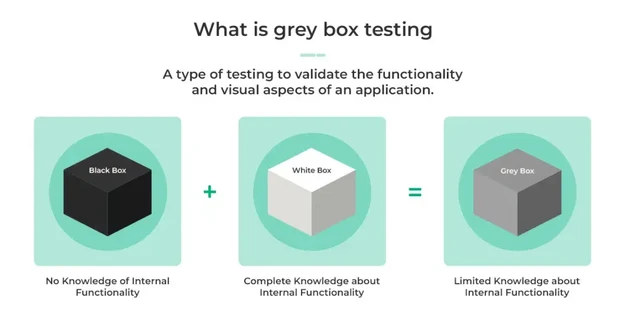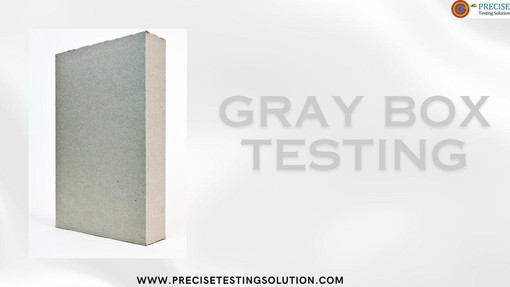Introduction
In the software testing landscape, grey box testing stands out as a versatile approach, combining the strengths of black box and white box testing. This method allows testers to leverage partial knowledge of the internal workings of the software while also focusing on its functionality. Grey box testing strikes a balance between thoroughness and efficiency, making it an essential strategy for ensuring robust software quality.
Understanding Grey Box Testing
Grey box testing is a hybrid methodology in which the tester mostly tests the software from an external viewpoint while having little understanding of its internal logic or structure. This approach entails comprehending the internal workings of the system in order to create better test cases and validate its behavior from the viewpoint of the user.When the tester has access to architecture diagrams, high-level design documentation, or little knowledge of the code, the gray box technique is especially helpful. Without necessitating the in-depth code knowledge of white box testing, this information helps identify flaws that could go unnoticed in just black box testing.
Key Characteristics of Grey Box Testing
Limited Insight: The tester possesses restricted access to the application's internal workings, which facilitates a more knowledgeable testing process.
Integration of Methods: Grey box testing utilizes strategies from both black box and white box testing, providing a well-rounded methodology.
Emphasis on Integration and User Experience: This approach guarantees that the software operates smoothly at the integration level while prioritizing user engagement.
Efficiency in Cost and Time: Given that it demands less intricate knowledge compared to white box testing, it can conserve both time and resources while delivering a Precise testing solution.
Advantages of Grey Box Testing
Enhanced Test Coverage: By integrating internal knowledge with external testing methods, grey box testing provides superior test coverage in comparison to solely black box or white box approaches.
Early Defect Detection: Testers are able to uncover integration problems, security flaws, and performance issues at an early stage in the development process.
Optimized Resource Utilization: This method strikes a balance between the necessity for technical expertise and functional knowledge, rendering it a cost-effective solution.
Refined Test Design: A partial understanding of the system's architecture enables testers to develop more focused and effective test cases.
Adaptability: Grey box testing can be tailored to fit various software development methodologies, such as Agile and Dev Ops.
Challenges in Grey Box Testing
Incomplete Internal Understanding: A tester's limited grasp of the system can result in insufficient testing in specific domains.
Reliance on Documentation: The success of grey box testing frequently depends on the quality and accessibility of design and architectural documentation.
Expertise Requirements: Testers must have a combination of technical skills and domain knowledge, which may require further training.
Inapplicability to Certain Projects: Projects characterized by intricate systems or limited access to internal information may restrict the use of grey box testing.
When to Use Grey Box Testing
Grey box testing is particularly effective in the following scenarios:
1. Integration Testing: Assessing the interactions among various modules or components.
2. Web Application Testing: Evaluating the functionality, security, and performance of web-based applications.
3. Security Assessment: Detecting vulnerabilities while comprehending the underlying system architecture.
4. Regression Testing: Ensuring that recent modifications or updates do not negatively impact existing functionalities.
5. Validation of Complex Applications: Testing systems characterized by complex workflows and integrations, such as enterprise software or e-commerce platforms.

Grey Box Testing Techniques
Matrix Testing: Assesses the interconnections among different program variables.
Regression Testing: Verifies that recent modifications do not interfere with current functionalities.
Pattern Testing: Examines the application’s code and system logs to detect recurring defect patterns.
Fault Injection: Deliberately introduces faults to evaluate the resilience of the system.
Transparent Box Testing: Concentrates on particular segments of the application, integrating internal insights with user scenarios.
Conclusion
Grey box testing is a comprehensive software evaluation method that identifies defects and optimizes efficiency by utilizing a limited understanding of the system's internal mechanisms. It is crucial for producing reliable, high-performing applications in the rapidly evolving software development landscape.
For more information, Visit Our Website at www.precisetestingsolution.com
Call our office @ 0120-3683602.
Also you can send us an email at info@precisetestingsolution.com.
We look forward to helping your business grow.


